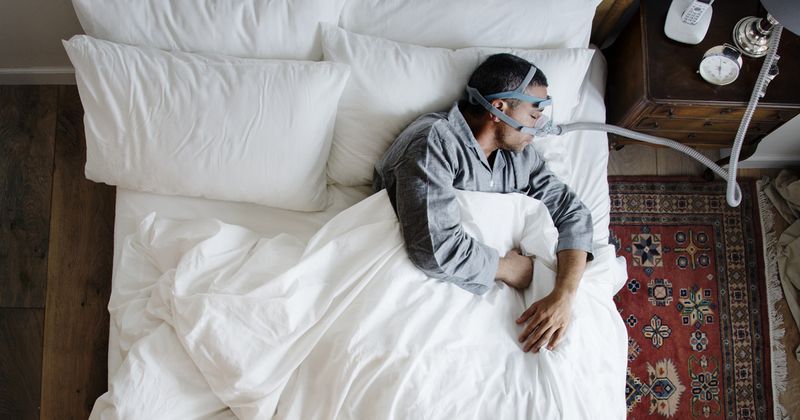Bidirectional association observed between type 2 diabetes, obstructive sleep apnea
Not only is obstructive sleep apnea an independent risk factor for type 2 diabetes — with stronger associations as apnea severity increases — but diabetes is a risk factor for sleep apnea, according to results of a meta-analysis.

“Earlier cross-sectional studies have observed the coexistence of obstructive sleep apnea and type 2 diabetes while subsequent cohort studies assessed whether there is a causal relationship between the two conditions in either direction,” Thomas Karagiannis, MD, MSc, PhD, a postdoctoral research fellow at the clinical research and evidence-based medicine unit at Aristotle University of Thessaloniki, Greece, told Healio. “We aimed to systematically retrieve, summarize and synthesize all available evidence from these cohort studies. We believe that an up-to-date and conclusive evidence map on the bidirectional link between obstructive sleep apnea and type 2 diabetes has clinical implications that are informative not only for health care professionals, but also for people with either condition.”

Karagiannis presented the findings at the European Association for the Study of Diabetes virtual meeting.
Researchers analyzed data from 16 articles of 19 cohort studies evaluating the association between type 2 diabetes and obstructive sleep apnea (OSA) published through January. Thirteen studies evaluated the association between prevalent OSA and incident type 2 diabetes, two studies looked at the association of prevalent type 2 diabetes and incident OSA, and four studies analyzed the bidirectional association of the OSA and type 2 diabetes. Data from these studies were pooled to assess the association of the two conditions from both directions.
Unadjusted meta-analysis showed adults with OSA were about 2.5 times more likely to develop type 2 diabetes vs. those without OSA (OR = 2.51; 95% CI, 2.00-3.15). However, Karagiannis noted the data had two important limitations.
“First, it does not adjust for various confounding variables, such BMI and other parameters related to both diabetes and sleep apnea,” Karagiannis said during the presentation. “Second, it does not take into account the timing of its event.”
Researchers extracted and analyzed hazard ratios from nine studies that adjusted for various confounders. The adjusted data also revealed adults with OSA had an increased risk for developing type 2 diabetes (HR = 1.44; 95% CI, 1.32-1.57). Further subgroup analysis revealed adults with severe OSA were at greater risk for developing type 2 diabetes (HR = 2; 95% CI, 1.34-2.99) than those with mild OSA (HR = 1.17; 95% CI, 1.02.-1.35) or moderate OSA (HR = 1.28; 95% CI, 1.08-1.52).
In unadjusted data, adults with type 2 diabetes had a greater likelihood of developing OSA (OR = 1.79; 95% CI, 1.43-2.24) vs. those without diabetes. There was a small significant association after factoring in adjusted hazard ratios (HR = 1.18; 95% CI, 1.01-1.37). Karagiannis said more cohort studies examining the association between prevalent type 2 diabetes and incident OSA are needed to strengthen the existing pool of studies.
“Our finding that obstructive sleep apnea is an independent risk factor for type 2 diabetes is not particularly surprising, corroborating the findings of individual cohort studies and previous pertinent meta-analyses,” Karagiannis said. “On the other hand, as of yet, the relationship in the opposite direction has not been adequately assessed, and it is noteworthy that our meta-analysis highlights that the findings of existing cohort studies are quite heterogenous, which is probably reflective of the variability among studies in sample size, design and method of assessment of either exposure or outcome.”
Despite the limitations, Karagiannis said, providers should be aware of the bidirectional association the two conditions share.
“Effective management of one condition can delay or prevent the development of the other and vice versa,” Karagiannis said. “This implication is more accurate in the analysis for prevalent obstructive sleep apnea leading to incident type 2 diabetes, in which the risk for developing type 2 diabetes was even more pronounced in patients with severe obstructive sleep apnea compared to those with mild or moderate manifestation of the condition.”







